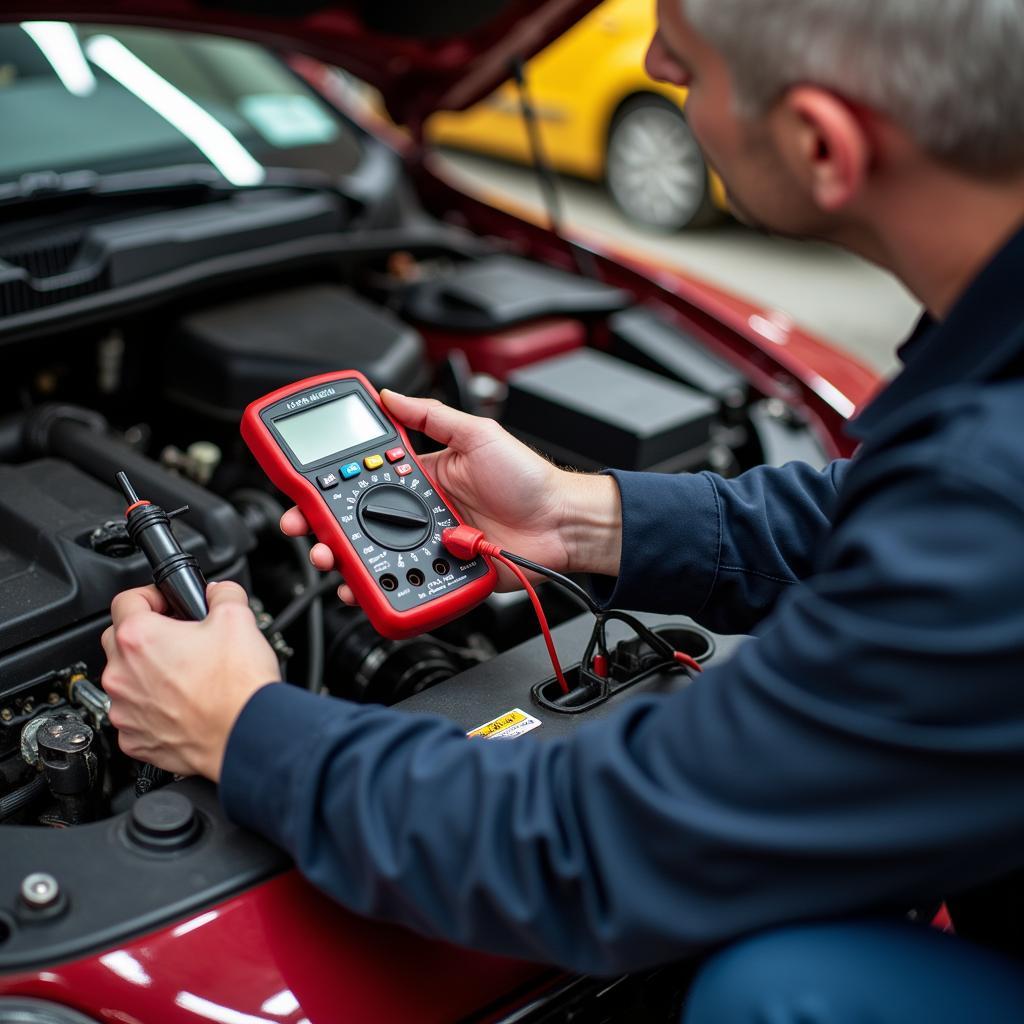Owning a car in America can be both liberating and challenging. While American cars are known for their power and style, they can also present their fair share of “American Car Problems.” This guide dives deep into common issues faced by American car owners, providing insights into their causes, solutions, and preventive measures. Whether you’re a seasoned mechanic or a car enthusiast looking to troubleshoot your vehicle, this comprehensive resource will equip you with the knowledge you need.
 Common Electrical Issues in American Cars
Common Electrical Issues in American Cars
One of the most common complaints about American cars, especially older models, relates to electrical systems. From flickering headlights to malfunctioning power windows, electrical issues can be frustrating and even dangerous.
Understanding Electrical Gremlins in American Cars
Several factors contribute to electrical problems in American cars. These include:
- Age and Wear: As vehicles age, wiring insulation can deteriorate, leading to shorts and open circuits. Corrosion is another culprit, particularly in areas exposed to moisture and road salt.
- Complex Electronics: Modern American cars are increasingly reliant on sophisticated electronics, making them susceptible to software glitches and sensor failures.
- Overloading Circuits: Adding aftermarket accessories without upgrading the electrical system can overload circuits, leading to blown fuses or damaged wiring.
 Checking a Car Battery
Checking a Car Battery
Diagnosing and Troubleshooting
Identifying the root cause of an electrical problem is crucial for effective repair. Here’s a step-by-step guide to troubleshooting:
- Check the Battery: A weak or dead battery is often the culprit behind starting issues and dim lights.
- Inspect Fuses and Relays: A blown fuse is a common cause of sudden electrical component failure.
- Examine Wiring and Connectors: Look for signs of damage, corrosion, or loose connections.
- Test Sensors and Modules: Use a diagnostic scanner to check for fault codes related to sensors or electronic control modules.
Preventing Future Electrical Problems
Prevention is always better than cure. Here are some tips to keep your American car’s electrical system in top shape:
- Regular Maintenance: Schedule routine inspections by a qualified mechanic to catch potential issues early on.
- Clean Battery Terminals: Corroded battery terminals can lead to starting problems and reduced battery life.
- Protect Wiring: Use protective covers or sprays to shield exposed wiring from the elements.
- Avoid Overloading Circuits: Consult a professional electrician before installing any aftermarket electrical accessories.
While electrical issues are a common concern, American cars can also experience problems related to their transmissions, engines, and other mechanical components.
car brands with electrical problems often share similar issues due to design similarities or shared component sourcing. Understanding these commonalities can help in diagnosing and addressing problems effectively.
Keeping Your American Car Running Smoothly
“American cars are built to last, but they require proper care and attention,” says John Miller, a veteran mechanic with over 20 years of experience. “Regular maintenance, timely repairs, and a bit of preventative care can go a long way in extending the life of your vehicle.”
 Car Maintenance Checklist
Car Maintenance Checklist
Here are some additional tips to keep in mind:
- Use High-Quality Fluids: Always use the recommended fluids and lubricants specified in your car’s owner’s manual.
- Address Warning Lights Promptly: Ignoring warning lights on your dashboard can lead to more severe problems down the line.
- Be Mindful of Driving Habits: Aggressive driving, frequent short trips, and overloading your vehicle can put unnecessary strain on its components.
Conclusion
While “american car problems” can range from minor inconveniences to major headaches, understanding their causes and implementing preventive measures can help you stay ahead of the curve. By following the tips outlined in this guide, you can keep your American car running smoothly for years to come.
For personalized advice or assistance with any car problems, feel free to contact the experts at AutoTipPro. We are dedicated to providing top-notch automotive solutions to keep you on the road.
Contact us at:
Phone: +1 (641) 206-8880
Office: 500 N St Mary’s St, San Antonio, TX 78205, United States
FAQ
1. Are American cars more prone to problems than foreign cars?
American cars have come a long way in terms of reliability. While they may have had a reputation for issues in the past, modern American cars are generally on par with their foreign counterparts.
2. How often should I service my American car?
Refer to your car’s owner’s manual for the recommended service intervals. As a general rule of thumb, aim for an oil change every 3,000 miles or 3 months, whichever comes first.
3. Can I use aftermarket parts on my American car?
While aftermarket parts can be cheaper, it’s generally recommended to stick with OEM (Original Equipment Manufacturer) parts. OEM parts are designed to meet the specific requirements of your vehicle and often come with warranties.
4. What should I do if my car breaks down?
If you experience a breakdown, pull over to a safe location, turn on your hazard lights, and contact roadside assistance.
5. How can I improve my car’s fuel efficiency?
Top cars with least problems often prioritize fuel efficiency in their designs. Some tips to improve your car’s fuel efficiency include maintaining proper tire pressure, avoiding aggressive driving, and reducing unnecessary cargo weight.
6. How can I find a reliable mechanic to work on my American car?
Ask for recommendations from friends, family, or online forums. Look for mechanics who specialize in American cars and have positive customer reviews.
7. Should I buy an extended warranty for my American car?
An extended warranty can provide peace of mind, especially if you plan on keeping your car for a long time. Consider the cost of the warranty and your car’s reliability history before making a decision.






Leave a Reply